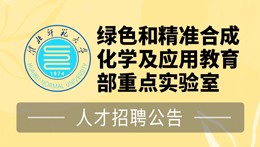引言和假设
本研究的目的是确定胆碱累积饮食摄入量的差异是否与发生急迫性尿失禁 (UUI) 的风险相关。
方法
这是护士健康研究 (NHS) I 和 II 中的一项分析。主要暴露量是从详细的每日食物频率调查问卷中获得的每种含胆碱化合物的每日累积摄入量。主要结局是UUI,定义为突然出现膀胱充盈感或无法上厕所时出现尿失,发生次数>1次/月。 Cox 比例风险回归模型用于计算总胆碱和胆碱衍生物与 UUI 风险之间关联的多变量调整相对风险和 95% 置信区间 (CI)。对绝经后妇女进行了 NHSI 和 NHSII 结果的固定效应荟萃分析,只是为了获得胆碱消耗对 UUI 影响的汇总估计。
结果
There were 33,273 participants in NHSI and 38,732 in NHSII who met all the criteria for inclusion in the analysis. The incidence of UUI was 9.41% (n=3,139) in NHSI and 4.25% (n=1,646) in NHSII. After adjusting for confounders choline was not found to be associated with UUI in postmenopausal women. However, in premenopausal women, relative to the lowest quartile, the highest quartile of consumption of total choline (aRR = 0.79, 95% CI: 0.64–0.99), free choline (aRR = 0.74, 95% CI: 0.58–0.94), and phosphocholine (aRR = 0.77, 95% CI: 0.61–0.96) were associated with a reduced risk of UUI.
结论
膳食胆碱摄入量增加与绝经前女性 UUI 风险降低相关。
 "点击查看英文标题和摘要"
"点击查看英文标题和摘要"
Effect of Dietary Choline Consumption on the Development of Urinary Urgency Incontinence in a Longitudinal Cohort of Women
Introduction and hypothesis
The objective of this study was to determine whether differences in the cumulative dietary intake of choline, is associated with the risk of developing urge urinary incontinence (UUI).
Methods
This was an analysis within the Nurses’ Health Study (NHS) I and II. The main exposure was the cumulative daily intake for each choline-containing compound obtained from a detailed daily food frequency questionnaire. The primary outcome was UUI, defined as urine loss with a sudden feeling of bladder fullness or when a toilet is inaccessible, occurring >1/month. Cox proportional hazards regression models were used to calculate multivariate-adjusted relative risks and 95% confidence intervals (CIs) for the association between total choline and choline derivatives and risk of UUI. Fixed effects meta-analyses of results from NHSI and NHSII were performed for postmenopausal women only to obtain a pooled estimate of the impact of choline consumption on UUI.
Results
There were 33,273 participants in NHSI and 38,732 in NHSII who met all the criteria for inclusion in the analysis. The incidence of UUI was 9.41% (n=3,139) in NHSI and 4.25% (n=1,646) in NHSII. After adjusting for confounders choline was not found to be associated with UUI in postmenopausal women. However, in premenopausal women, relative to the lowest quartile, the highest quartile of consumption of total choline (aRR = 0.79, 95% CI: 0.64–0.99), free choline (aRR = 0.74, 95% CI: 0.58–0.94), and phosphocholine (aRR = 0.77, 95% CI: 0.61–0.96) were associated with a reduced risk of UUI.
Conclusions
Increased dietary choline consumption was associated with a reduced risk of UUI among premenopausal women.
































 京公网安备 11010802027423号
京公网安备 11010802027423号